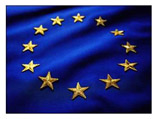European Commission Proposals for Global Climate Pact
 The European Commission has set out its proposals for a comprehensive and ambitious new global agreement to tackle climate change and how it could be financed. The new pact is due to be concluded at the Copenhagen UN climate conference in December.
The European Commission has set out its proposals for a comprehensive and ambitious new global agreement to tackle climate change and how it could be financed. The new pact is due to be concluded at the Copenhagen UN climate conference in December. The Commission’s proposals include the creation of an OECD-wide carbon market by 2015 and the exploration of innovative sources of international funding based on the ’polluter pays’ principle and ability to pay.
In order to keep temperature increase below 2°C, developing countries will require substantially higher funding from the developed world and multilateral institutions to help them shoulder their contribution to addressing climate change.
Environment Commissioner Stavros Dimas said: “Tackling the causes and impacts of climate change will require significant private and public investment over coming decades, though these investments will cost far less than letting climate change continue its destructive course.”
“The European Economic Recovery Plan and similar measures being taken around the world to address the economic crisis are a chance to advance the low-carbon investment needed and stimulate growth, innovation and job creation at the same time,” added Dimas.
E.U. Copenhagen goal
The EU’s goal is to limit global warming to less than 2°C above the pre-industrial temperature as there is strong scientific evidence that climate change will become dangerous beyond this point.
The Copenhagen deal should both set global goals to reduce emissions and provide the basis for strengthening countries’ ability to adapt to climate change. The Commission offers concrete proposals to reach these goals.
Targets and actions
To stay below 2°C, global emissions need to peak before 2020 and then be cut to less than 50% of 1990 levels by 2050. This will require action by both developed and developing countries.
Developed countries must take the lead and cut their collective emissions by 30% of 1990 levels by 2020. The EU has set an example by committing to reduce emissions by 30% if other developed countries commit to comparable cuts and has already put in place the measures to cut its own emissions by 20%.
The Commission proposes specific parameters to ensure national targets entail a comparable level of effort. All OECD countries and EU Member States, EU candidate countries and potential candidates should take on emission targets.
Developing countries, except the poorest ones, should limit growth in their collective emissions to 15-30% below business as usual levels by 2020. This should include a rapid decrease in emissions from tropical deforestation.
These countries should commit to adopting low-carbon development strategies covering all key emitting sectors by 2011. A new international mechanism will assess these strategies and match proposed actions with appropriate external support.
Financing low-carbon development
To reduce emissions, global net additional investment may need to rise to around €175 billion per year in 2020 according to independent estimates. More than half of this will be needed in developing countries. Up to 2020 the bulk of actions in these countries will have low costs - or even benefits - and should be financed domestically.
International financial support for actions exceeding a country’s domestic capabilities should come from sources including public funds and international carbon crediting mechanisms.
The Copenhagen agreement should also provide a framework to help countries adapt to inevitable climate change. All developed and developing countries should be required to elaborate national adaptation strategies. Support for adaptation should be provided to the most vulnerable Least Developed Countries and small island developing states.
The EU should explore potential innovative sources of international funding based on the polluter pays principle and the ability to pay. EU Member States could also use part of their future revenues from auctioning allowances under the EU Emissions Trading System to support developing countries.
Global carbon market
The EU should seek to build, by 2015, an OECD-wide carbon market by linking the EU ETS with other comparable cap-and-trade systems in order to mitigate and to raise funds to fight climate change. The market should be expanded to include major emerging economies by 2020 with a view to building a global carbon market.
The Kyoto Protocol’s Clean Development Mechanism should be reformed. For advanced developing countries and highly competitive economic sectors, the CDM should be gradually replaced by a sectoral crediting mechanism and cap-and-trade systems.
Next steps
The Commission’s Proposal will go to the EU Council, Parliament and consultative bodies. The European Council is expected to give its response in March.
More information on the E.U. Action Plan on Climate Change is available here.
For More Information: European Union - Environment
You can return to the main Market News page, or press the Back button on your browser.

